Aug
29
2023
 We are still sorting out the strengths and weaknesses of the new crop of artificial intelligence (AI) applications, the poster-child of which is ChatGPT. This is a so-called large language model application using a “generative pre-trained transformer”. Essentially these types of AI are trained on very large sets of data and are able to generate human-sounding text by predicting the most likely next word segment in a sequence. The results are surprisingly good.
We are still sorting out the strengths and weaknesses of the new crop of artificial intelligence (AI) applications, the poster-child of which is ChatGPT. This is a so-called large language model application using a “generative pre-trained transformer”. Essentially these types of AI are trained on very large sets of data and are able to generate human-sounding text by predicting the most likely next word segment in a sequence. The results are surprisingly good.
There have been a slew of studies seeing how well ChatGPT or a similar AI performs on standardized tests. On any knowledge-based exam, it does very well. ChatGPT has passed the medical board exams, for example, and even many (but not all) subspecialty boards. If the information is out there on the internet, ChatGPT can generate this knowledge.
All of this has teachers in a well-deserved panic. Students can essentially use ChatGPT to write their essays and do their homework. Essays are a bit different than straight-forward knowledge-based exams. They might require analysis and creativity. How would ChatGPT perform at university-level course essay tasks? That was the focus of a recent study. I already gave the answer away in the headline to this blog post – it did very well.
They directly compared the work of students with ChatGPT in 32 different courses, assessed blindly by multiple graders. They found ChatGPT was equal to or superior than the students in 9 of 32 courses. For most of the rest they were with the range of acceptable if outperformed by the students. There were several areas where ChatGPT did not perform well, and these were predictable based on the known weaknesses of the application – mathematics, economics, and coding. ChatGPT is not good at math, so any course work that heavily relied upon math, it faltered. But overall, ChatGPT is performing within the range of university students in terms of completing essay and homework assignments.
Continue Reading »
Aug
28
2023
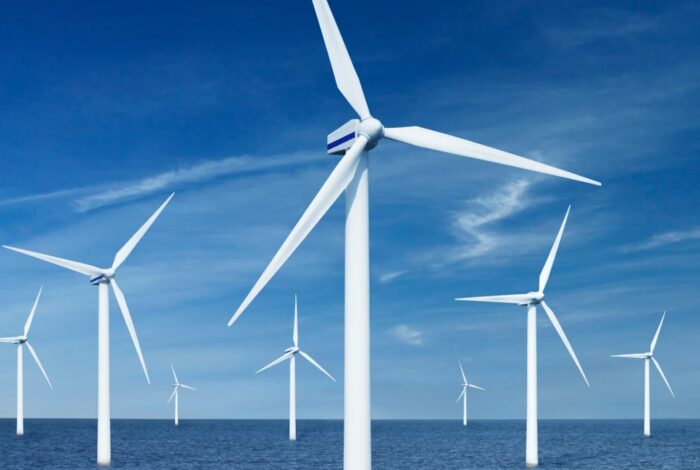 What is the potential for climate change policy to affect climate change? I often discuss, here and on the SGU, the science of climate change, and specifically focus on what we can do about it, mostly by reducing our CO2 emissions. Often I get push back explicitly promoting the position that there is nothing we can really do about, so we should just let technology and economics play themselves out. This is the position of the fossil fuel industry, whose opinion on climate change may vary but always concludes with – do nothing. This may take various forms – climate change isn’t real, climate change won’t be bad, it may be happening but it’s not because of human activity, there’s nothing we can do about it anyway, or whatabout China. The one thing all these positions have in common is the ultimate result – do nothing. It’s almost as if some people are starting with that conclusion and then working backward to whatever justification they can defend at the moment.
What is the potential for climate change policy to affect climate change? I often discuss, here and on the SGU, the science of climate change, and specifically focus on what we can do about it, mostly by reducing our CO2 emissions. Often I get push back explicitly promoting the position that there is nothing we can really do about, so we should just let technology and economics play themselves out. This is the position of the fossil fuel industry, whose opinion on climate change may vary but always concludes with – do nothing. This may take various forms – climate change isn’t real, climate change won’t be bad, it may be happening but it’s not because of human activity, there’s nothing we can do about it anyway, or whatabout China. The one thing all these positions have in common is the ultimate result – do nothing. It’s almost as if some people are starting with that conclusion and then working backward to whatever justification they can defend at the moment.
But often I get questions that reflect genuine confusion about climate change policy – is there anything “we” can really do? The “we” may be us as individuals, or our country, or the world. I do believe the most important thing we can do as individuals, those of us living in democracies, is to be knowledgeable about climate policy and vote for politicians who support good climate policy. If we don’t make it a priority why should we expect our elected leaders to? In a recent Pew survey, 71% of Americans said they thought that policy to address climate change is either a top or important priority. In the same survey 74% of Amercians support US involvement in international efforts to address climate change.
But what is good climate policy? For most people who raise the issue for me the first thing that comes up is subsidies for electric vehicles, almost as if this one policy is the poster-child for climate change action. But this is arguably the least effective and least important climate policy. Subsidies may have been useful a decade ago to kickstart a new industry, but I think we are past that point. Here are some of the policies that can have a significant, even dramatic effect, on future CO2 release. Continue Reading »
Aug
25
2023
 I know you don’t need one more thing to worry about, but I have already written about the growing problem of space debris. At least this update is about a mission to help clear some of that debris – ClearSpace-1. This is an ESA mission which they contracted out to a Swiss company, Clearspace SA, who is making a satellite whose purpose is to grab large pieces of space junk and de-orbit it.
I know you don’t need one more thing to worry about, but I have already written about the growing problem of space debris. At least this update is about a mission to help clear some of that debris – ClearSpace-1. This is an ESA mission which they contracted out to a Swiss company, Clearspace SA, who is making a satellite whose purpose is to grab large pieces of space junk and de-orbit it.
The problem this mission is trying to solve is the fact that we have put millions of pieces of debris into various orbits around the Earth. While space is big, usable near-Earth orbits are finite, and if you put millions of pieces of debris there zipping around at fast speeds, there will be collisions. The worst-case scenario is what’s called a Kessler cascade, in which a collision causes more debris which then increases the probability of further collisions which increases the amount of debris, and the cycle continues. This won’t be an event so much as a process that unfolds over a long period of time. But it has the potential of rendering Earth orbit increasingly dangerous to the point of being unusable. It also makes the task of cleaning up orbit exponentially more difficult.
The Clearspace craft looks like a mechanical squid with 4 arms which can grab tightly onto a large piece of space debris. The planned first mission with target the upper stage of Vespa, part of the ESA Vega launcher. This is a 112 kg target. Once it grabs the debris it with then undergo a controlled deorbit. The mission is planned for 2026, and if successful will be the first mission of its kind. This is a proof-of-concept mission, because removing one piece of large debris is insignificant compared to how much debris is already up there. But we need to demonstrate that the whole system works, and we also need to confirm how much each such mission will cost.
Continue Reading »
Aug
24
2023
 Japan is planning on releasing treated radioactive water from the Fukushima nuclear accident into the ocean. They claim this will be completely safe, but there are protests going on in both Japan and South Korea, and China has just placed a ban on seafood from Japan. In a perfect world we would just have a calm and transparent discussion about the relevant scientific facts, make a reasonable decision, and go forward without any drama. But of course that is not the world we live in. But let’s pretend it is – what are the relevant facts?
Japan is planning on releasing treated radioactive water from the Fukushima nuclear accident into the ocean. They claim this will be completely safe, but there are protests going on in both Japan and South Korea, and China has just placed a ban on seafood from Japan. In a perfect world we would just have a calm and transparent discussion about the relevant scientific facts, make a reasonable decision, and go forward without any drama. But of course that is not the world we live in. But let’s pretend it is – what are the relevant facts?
In 2011 a tsunami (and poor safety decisions) caused several reactors at the Fukushima Daichi nuclear power plant to melt down. These reactors were flooded with water to cool them, but heat from continued radioactive decay means they need to be continuously cooled. The water used has become contaminated with 64 different radioactive isotopes. In the past 12 years 350 million gallons of contaminated water has been stored in over 1,000 tanks on site, but they are simply running out of room, which is why there is urgency to do something with the stored contaminated water. How unsafe is this water?
Over the last 12 years the short half-life isotopes have lost most of their radioactivity, but there are still some long half-life isotopes. This is good because the shorter the half-life the more intense the radioactivity per mass, by definition. Really long half-life isotopes, like carbon-14 (half-life 5,000 years), have much lower intensity. Also, the contaminated water as been treated with several processes, such as filtration and sedimentation. Most of the remaining radioactive isotopes have been removed (to levels below acceptable limits) by this process, although carbon-14 and tritium remain. How much radioactivity is left in this contaminated but treated water? That is the key question.
Continue Reading »
Aug
22
2023
 What does a majestic eagle sound like, or the hoot of a spider monkey, or the roar of a bear? Unless you have an interest in movie tropes, or listen regularly to the SGU, you may have a complete misconception about the sounds these and many other animals make. Eagles, for example, do not make that cool-sounding screech that is almost always paired with a video of an eagle. That is the sound of a red-tailed hawk, which has become the standard sound movies use for any raptor. Eagles make a high-pitched chirping sound. If you have seen a bear roar in a movie, chances are the sound you heard was that of a tiger. All primates hoot like a chimp, all frogs “ribbit” like that one species whose range includes Hollywood.
What does a majestic eagle sound like, or the hoot of a spider monkey, or the roar of a bear? Unless you have an interest in movie tropes, or listen regularly to the SGU, you may have a complete misconception about the sounds these and many other animals make. Eagles, for example, do not make that cool-sounding screech that is almost always paired with a video of an eagle. That is the sound of a red-tailed hawk, which has become the standard sound movies use for any raptor. Eagles make a high-pitched chirping sound. If you have seen a bear roar in a movie, chances are the sound you heard was that of a tiger. All primates hoot like a chimp, all frogs “ribbit” like that one species whose range includes Hollywood.
The same is true of soundscapes. If there is a scene of a jungle, then you will hear a classic jungle soundscape, even if it includes animals from a different continent. If you are in a more foreboding or swampy area, you will hear a loon. Doesn’t matter where the actual location is supposed to be.
I understand why this is the case. Modern moviemaking is, in part, an agreed-upon cultural language. The writer/director/costumer/set-dresser/editor/music director are all communicating to the audience. They are trying to efficiently create a mood, or convey a situation, or signal to the audience something about a location or a character. There are ways to do this using a pre-existing movie language. If someone just came back from grocery shopping, the paper bags they are carrying will have a baguette sticking out the top, and/or carrot tops. This is not because, statistically, that is what a grocery bag is likely to contain, but rather it instantly lets the audience know what they are.
Similarly, with animals sounds, a majestic animal must sound majestic. A large predator must roar like a large predator. The problem for movie makers is that often reality does not sound real enough. It doesn’t convey the emotion or danger that a scene might require.
Continue Reading »
Aug
21
2023
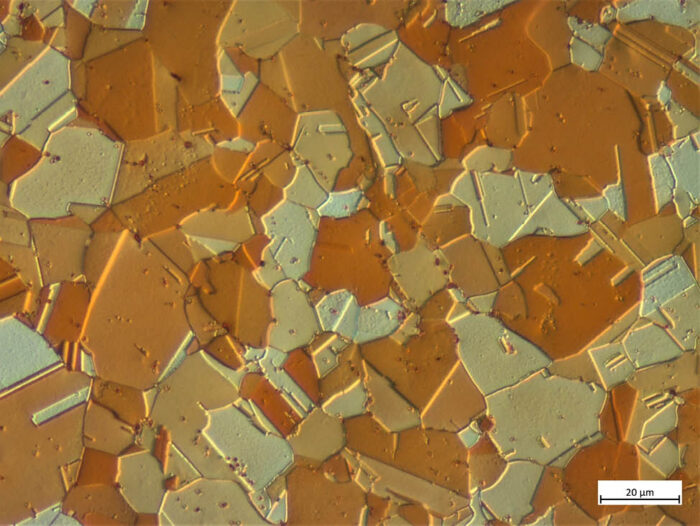 Science fiction writers, who have to think deeply about the possible nature of future technology, often invent new sci-fi materials in order to make their future technology seem plausible. They seem to understand the critical role that material science plays in advancing technology. This is why sci-fi is full of fictional materials such as unobtainium, vibranium, adamantium, and carbonite (to name just some of the most famous ones). New materials change the limits of what’s possible. There is only so much that technology can do within the limits of existing materials.
Science fiction writers, who have to think deeply about the possible nature of future technology, often invent new sci-fi materials in order to make their future technology seem plausible. They seem to understand the critical role that material science plays in advancing technology. This is why sci-fi is full of fictional materials such as unobtainium, vibranium, adamantium, and carbonite (to name just some of the most famous ones). New materials change the limits of what’s possible. There is only so much that technology can do within the limits of existing materials.
In fact the early stages of human technology are defined by the materials they used, from the stone age to the iron age. Today we live in the steel age, more than 3,000 years after steel production came into existence. There are many advanced materials with different applications, but in many ways steel still defines the limits of our technology. This is why research looking for ways to improve the characteristics of modern steel is still going on. A recent study might be pointing the way to one method of pushing the limits of steel.
Steel is simply an alloy of iron combined with a small percentage of carbon. Carbon atoms bind with the iron atoms to make crystals of steel that are harder and stronger than iron by itself. The properties of steel can be adjusted by the percentage of carbon in the alloy. The properties of the resulting steel can also be altered by alloying other metals with the steel as well- molybdenum, manganese, nickel, chromium, vanadium, silicon, and boron, for example. These can make the steel stronger, tougher, more ductile, heat resistant, or rust resistant.
Continue Reading »
Aug
18
2023
 What’s going on in the minds of people who appear to be comatose? This has been an enduring neurological question from the beginning of neurology as a discipline. Recent technological advances have completely changed the game in terms of evaluating comatose patients, and now a recent study takes our understanding one step further by teasing apart how different systems in the brain contribute to conscious responsiveness.
What’s going on in the minds of people who appear to be comatose? This has been an enduring neurological question from the beginning of neurology as a discipline. Recent technological advances have completely changed the game in terms of evaluating comatose patients, and now a recent study takes our understanding one step further by teasing apart how different systems in the brain contribute to conscious responsiveness.
This has been a story I have been following closely for years, both as a practicing neurologist and science communicator. For background, when evaluating patients who have a reduced ability to execute aspects of the neurological exam, there is an important question to address in terms of interpretation – are they not able to perform a given task because of a focal deficit directly affecting that task, are they generally cognitively impaired or have decreased level of conscious awareness, or are other focal deficits getting in the way of carrying out the task? For example, if I ask a patient to raise their right arm and they don’t, is that because they have right arm weakness, because they are not awake enough to process the command, or because they are deaf? Perhaps they have a frozen shoulder, or they are just tired of being examined. We have to be careful in interpreting a failure to respond or carry out a requested action.
One way to deal with this uncertainty is to do a thorough exam. The more different types of examination you do, the better you are able to put each piece into the overall context. But this approach has its limits, especially when dealing with patients who have a severe impairment of consciousness, which gets us to the context of this latest study. For further background, there are different levels of impaired consciousness, but we are talking here about two in particular. A persistent vegetative state is defined as an impairment of consciousness in which the person has zero ability to respond to or interact with their environment. If there is any flicker of responsiveness, then we have to upgrade them to a minimally conscious state. The diagnosis of persistent vegetative state, therefore, is partly based on demonstrating the absence of a finding, which means it is only as reliable as the thoroughness with which one has looked. This is why coma specialists will often do an enhanced neurological exam, looking really closely and for a long time for any sign of responsiveness. Doing this picks up a percentage of patients who would otherwise have been diagnosed as persistent vegetative.
Continue Reading »
Aug
15
2023
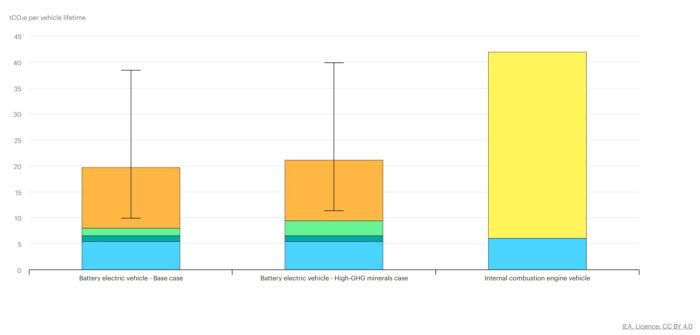 This article is part of my informal series on EVs, sorting through the claims, reality, and propaganda. There are many complicated factors to sort through, but overall, in my opinion, most concerns about EVs are outdated or overblown. There are definitely locations and use scenarios that still favor ICE (internal combustion engine) vehicles (or at least hybrids) for now, but the battery and EV technology is still on the steep part of the curve, and infrastructure is being built. The percentage of the population for whom EVs make sense will slowly expand, until it’s the best choice for 95% or so. Over this same time period (about 20 years) we should also be decarbonizing our energy production. We can also be reducing dependence on individual cars by building mass transit, making more walkable living spaces, and eventually developing cars as a service (with self-driving cars). For trains and long haul trucking, hydrogen may eventually be the best bet. For short flight planes, electric vehicles are increasingly plausible, while long distance jet travel will need biofuels to keep their carbon footprint down.
This article is part of my informal series on EVs, sorting through the claims, reality, and propaganda. There are many complicated factors to sort through, but overall, in my opinion, most concerns about EVs are outdated or overblown. There are definitely locations and use scenarios that still favor ICE (internal combustion engine) vehicles (or at least hybrids) for now, but the battery and EV technology is still on the steep part of the curve, and infrastructure is being built. The percentage of the population for whom EVs make sense will slowly expand, until it’s the best choice for 95% or so. Over this same time period (about 20 years) we should also be decarbonizing our energy production. We can also be reducing dependence on individual cars by building mass transit, making more walkable living spaces, and eventually developing cars as a service (with self-driving cars). For trains and long haul trucking, hydrogen may eventually be the best bet. For short flight planes, electric vehicles are increasingly plausible, while long distance jet travel will need biofuels to keep their carbon footprint down.
After my recent articles on EVs, and companion discussions on the SGU, one of the questions that has been raised that I want to dive deeper into is this – are EVs still better than ICE vehicles even when we consider everything that goes into vehicle production? Spoiler – I think the consensus is that yes, EVs are still better. They have a lower total carbon footprint over the lifetime of use than ICE vehicles. But this is not a universal opinion. For example, I was pointed to this podcast in which the business man and physicist host claims: “Pushing an all-EV world is likely to increase CO2 emissions.”
Continue Reading »
Aug
10
2023
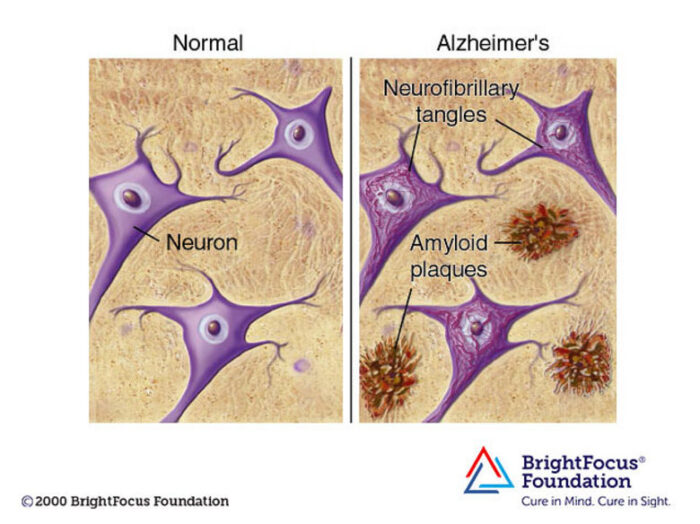 Decades of complex research and persevering through repeated disappointment appears to be finally paying off for the diagnosis and treatment of Alzheimer’s disease (AD). In 2021 Aduhelm was the first drug approved by the FDA (granted contingent accelerated approval) that is potentially disease-modifying in AD. This year two additional drugs received FDA approval. All three drugs are monoclonal antibodies that target amyloid protein. They each seem to have overall modest clinical effect, but they are the first drugs to actually slow down progression of AD, which represents important confirmation of the amyloid hypothesis. Until now attempts at slowing down the disease by targeting amyloid have failed.
Decades of complex research and persevering through repeated disappointment appears to be finally paying off for the diagnosis and treatment of Alzheimer’s disease (AD). In 2021 Aduhelm was the first drug approved by the FDA (granted contingent accelerated approval) that is potentially disease-modifying in AD. This year two additional drugs received FDA approval. All three drugs are monoclonal antibodies that target amyloid protein. They each seem to have overall modest clinical effect, but they are the first drugs to actually slow down progression of AD, which represents important confirmation of the amyloid hypothesis. Until now attempts at slowing down the disease by targeting amyloid have failed.
Three drugs in as many years is no coincidence – this is the result of decades of research into a very complex disease, combined with monoclonal antibody technology coming into its own as a therapeutic option. AD is a form of dementia, a chronic degenerative disease of the brain that causes the slow loss of cognitive function and memory over years. There are over 6 million people in the US alone with AD, and it represents a massive health care burden. More than 10% of the population over 65 have AD.
The probable reason we have rapidly crossed over the threshold to detectable clinical effect is attributed by experts to two main factors – treating people earlier in the disease, and giving a more aggressive treatment (essentially pushing dosing to a higher level). The higher dosing comes with a downside of significant side effects, including brain swelling and bleeding. But that it what it took to show even a modest clinical benefit. But the fact that three drugs, which target different aspects of amyloid protein, show promising or demonstrated clinical benefit helps confirm that the amyloid protein and the plaques they form in the brain are, to some extend driving AD. They are not just a marker for brain cell damage, they are at least partly responsible for that damage. Until now, this was not clear.
Continue Reading »
Aug
04
2023
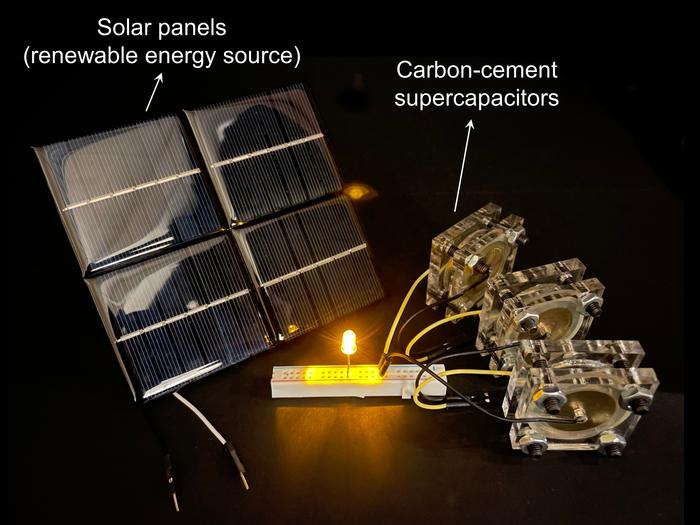 Imagine if every house, every building, came with 1-2 days (or possibly more) of energy storage. What if every wind turbine could store a day’s worth of the energy it produces on average? How beneficial would it be if the most common building material the world could be used to store energy? This prospect is not far fetched, and a new study by MIT scientists has already done a proof-of-concept.
Imagine if every house, every building, came with 1-2 days (or possibly more) of energy storage. What if every wind turbine could store a day’s worth of the energy it produces on average? How beneficial would it be if the most common building material the world could be used to store energy? This prospect is not far fetched, and a new study by MIT scientists has already done a proof-of-concept.
The material is cement, and what these researchers have demonstrated is that they can turn cement into a supercapacitor with another common material – carbon black. A capacitor is a device in which two conductive plates are separated by an insulating layer. This allows negative charge to build up on the positive plate and positive charge to build up on the negative plate, with the separated charges storing electrical energy. The Capacitors have several advantages for energy storage devices – they can store and discharge energy very quickly, they are relatively simple to construct, and they have almost endless charge and discharge cycles. But they also have one major disadvantage, they store very little energy per volume or mass.
As I discussed previously, current lithium ion batteries have energy densities up to 265 Wh/kg. The new Amprius lithium ion batteries with silicon anodes have an energy density of 500 Wh/kg. A typical supercapacitor (just a high energy density capacitor) has an energy density of 16 Wh/kg. My previous article was about a carbon nanofiber supercapacitor with energy density up to 73 Wh/kg – very high for a supercapacitor, but still tiny compared to cutting edge lithium ion batteries.
For an application like a car, a supercapacitor simply holds too little energy. But they could supplement the battery, and would increase the efficiency of regenerative braking. Future EVs might combine a battery and a supercapacitor to get the best of both worlds. Also, if the body of the car itself could be constructed out of a supercapacitor, that could add range and efficiency without adding any weight to the car.
Continue Reading »
 We are still sorting out the strengths and weaknesses of the new crop of artificial intelligence (AI) applications, the poster-child of which is ChatGPT. This is a so-called large language model application using a “generative pre-trained transformer”. Essentially these types of AI are trained on very large sets of data and are able to generate human-sounding text by predicting the most likely next word segment in a sequence. The results are surprisingly good.
We are still sorting out the strengths and weaknesses of the new crop of artificial intelligence (AI) applications, the poster-child of which is ChatGPT. This is a so-called large language model application using a “generative pre-trained transformer”. Essentially these types of AI are trained on very large sets of data and are able to generate human-sounding text by predicting the most likely next word segment in a sequence. The results are surprisingly good.
 What is the potential for climate change policy to affect climate change? I often discuss, here and on the SGU, the science of climate change, and specifically focus on what we can do about it, mostly by reducing our CO2 emissions. Often I get push back explicitly promoting the position that there is nothing we can really do about, so we should just let technology and economics play themselves out. This is the position of the fossil fuel industry, whose opinion on climate change may vary but always concludes with – do nothing. This may take various forms – climate change isn’t real, climate change won’t be bad, it may be happening but it’s not because of human activity, there’s nothing we can do about it anyway, or whatabout China. The one thing all these positions have in common is the ultimate result – do nothing. It’s almost as if some people are starting with that conclusion and then working backward to whatever justification they can defend at the moment.
What is the potential for climate change policy to affect climate change? I often discuss, here and on the SGU, the science of climate change, and specifically focus on what we can do about it, mostly by reducing our CO2 emissions. Often I get push back explicitly promoting the position that there is nothing we can really do about, so we should just let technology and economics play themselves out. This is the position of the fossil fuel industry, whose opinion on climate change may vary but always concludes with – do nothing. This may take various forms – climate change isn’t real, climate change won’t be bad, it may be happening but it’s not because of human activity, there’s nothing we can do about it anyway, or whatabout China. The one thing all these positions have in common is the ultimate result – do nothing. It’s almost as if some people are starting with that conclusion and then working backward to whatever justification they can defend at the moment. I know you don’t need one more thing to worry about, but I have already written about the
I know you don’t need one more thing to worry about, but I have already written about the  Japan is planning on releasing treated radioactive water from the Fukushima nuclear accident into the ocean. They claim this will be completely safe, but there are
Japan is planning on releasing treated radioactive water from the Fukushima nuclear accident into the ocean. They claim this will be completely safe, but there are  What does a majestic eagle sound like, or the hoot of a spider monkey, or the roar of a bear?
What does a majestic eagle sound like, or the hoot of a spider monkey, or the roar of a bear?  Science fiction writers, who have to think deeply about the possible nature of future technology, often invent new sci-fi materials in order to make their future technology seem plausible. They seem to understand the critical role that material science plays in advancing technology. This is why sci-fi is full of fictional materials such as unobtainium, vibranium, adamantium, and carbonite (to name just some of the most famous ones). New materials change the limits of what’s possible. There is only so much that technology can do within the limits of existing materials.
Science fiction writers, who have to think deeply about the possible nature of future technology, often invent new sci-fi materials in order to make their future technology seem plausible. They seem to understand the critical role that material science plays in advancing technology. This is why sci-fi is full of fictional materials such as unobtainium, vibranium, adamantium, and carbonite (to name just some of the most famous ones). New materials change the limits of what’s possible. There is only so much that technology can do within the limits of existing materials. What’s going on in the minds of people who appear to be comatose? This has been an enduring neurological question from the beginning of neurology as a discipline. Recent technological advances have completely changed the game in terms of evaluating comatose patients, and now a recent study takes our understanding one step further by teasing apart how different systems in the brain contribute to conscious responsiveness.
What’s going on in the minds of people who appear to be comatose? This has been an enduring neurological question from the beginning of neurology as a discipline. Recent technological advances have completely changed the game in terms of evaluating comatose patients, and now a recent study takes our understanding one step further by teasing apart how different systems in the brain contribute to conscious responsiveness. This article is part of my informal series on EVs,
This article is part of my informal series on EVs,  Decades of complex research and persevering through repeated disappointment appears to be finally paying off for the diagnosis and treatment of Alzheimer’s disease (AD). In 2021 Aduhelm was the first drug approved by the FDA (granted contingent accelerated approval) that is potentially disease-modifying in AD. This year
Decades of complex research and persevering through repeated disappointment appears to be finally paying off for the diagnosis and treatment of Alzheimer’s disease (AD). In 2021 Aduhelm was the first drug approved by the FDA (granted contingent accelerated approval) that is potentially disease-modifying in AD. This year Imagine if every house, every building, came with 1-2 days (or possibly more) of energy storage. What if every wind turbine could store a day’s worth of the energy it produces on average? How beneficial would it be if the most common building material the world could be used to store energy? This prospect is not far fetched, and
Imagine if every house, every building, came with 1-2 days (or possibly more) of energy storage. What if every wind turbine could store a day’s worth of the energy it produces on average? How beneficial would it be if the most common building material the world could be used to store energy? This prospect is not far fetched, and 




